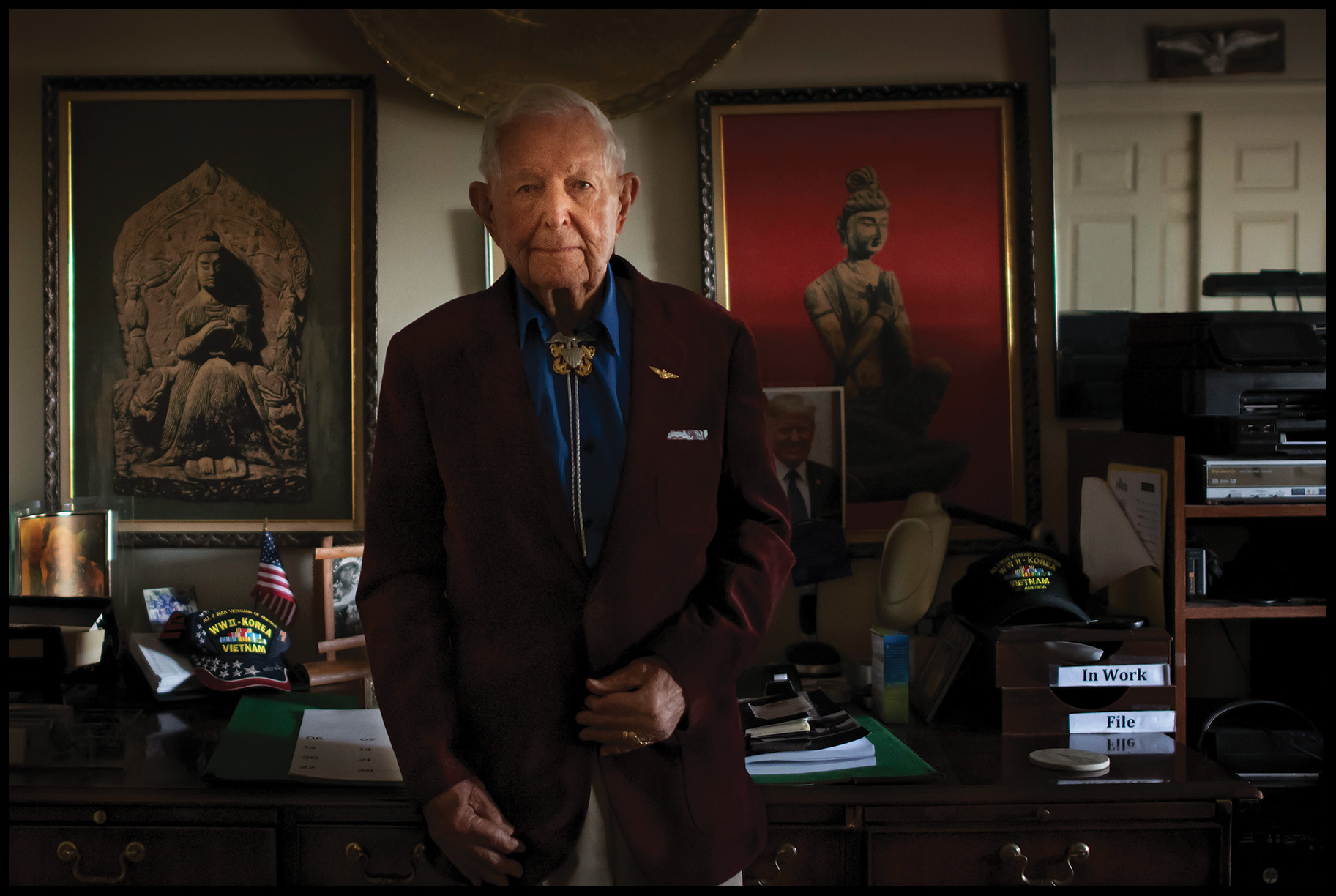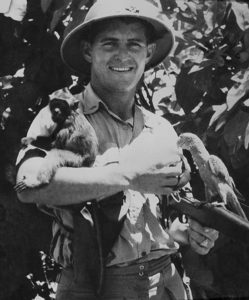
Francis C. (Frank) Forsberg
Served on USS Argon
Francis C. (Frank) Forsberg
Captain, U.S. Navy
1938-1966

1stLt. Francis Forsberg
Philippines, 1945
My dad gave me a couple of pieces of advice that I’ve followed to this day—any job you get, do it better than the guy before you, and every opportunity you get, study, study, study.
I was born in Honolulu in 1921 and grew up in San Diego. My father was a chief photographer in the Navy. When I was a teenager, there were some kids who wanted to beat me up. I didn’t know how to fight. My dad gave me boxing lessons and they came in handy in the Navy. I joined in 1938 at 17. I had no visions of joining the Navy, but I had a terrible temper and ran away from home. I ended up on the streets of Baltimore and joined a line two blocks long to get in the Navy. Only two of us got in, and both of our fathers were in the Navy. My dad gave me a couple of pieces of advice that I’ve followed to this day—any job you get, do it better than the guy before you, and every opportunity you get, study, study, study.
My first job in the Navy was captain of the head. I had an inspection and wondered how I could do it better than anybody else. I got up about 4:00am with brass polish and polished all the goosenecks. I had that job one week and was promoted to chief recruit petty officer. I joined the fleet going around the world. I was on the Argonne. My compartment included Marines and Fleet Camera Party. A Marine made a nasty remark and I beat the hell out of him. They said I could join the Fleet Camera Party but I had to fight on every ship we went on. I said fine.
Every ship that we photographed going through target practice had a ring set up. That’s how boxing helped my career. They sent me to photo school and slide film school, which was really Naval intelligence. Then I flew as an aerial photographer. When the war broke out, they transferred my squadron to Boston Harbor. I was petty officer of the watch. While I was standing watch one night, a car came up fast. I flashed the light at them, but they didn’t stop. I pulled my .45 and pointed it at the car. The guy said, “I’m commanding officer of the station.” I said I didn’t recognize him and he needed to stop and be recognized. After checking his ID, I saluted and said, ‘Thank you, sir.’
The next day my commanding officer asked what I did to the commanding officer of the station. I said I stopped him. He said, “What a masterpiece of understatement.” Because of that, he sent me to flight training and that’s how I became an enlisted pilot. I taught the Norden bombsight for a year, then went to four-engine training. I went to the Philippines as the first to fly typhoon reconnaissance. Another piece of advice my dad gave me was “do not get a tattoo”. When they were selecting enlisted pilots for regular Navy, they selected two of us out of 18. We were the only ones without tattoos.
My best duty station was Navy liaison officer with the Air Force in Europe. Before that, I was selected by the CIA to be in the U-2 program. I went to photo intelligence school during the Korean War. I was the assistant intelligence/photo intelligence officer for Task Force 77. After the Korean War I went to a new ASW plane squadron, the P2V. I became the commanding officer of a squadron and it was extremely successful. We won the Navy E (most efficient), the flying safety award, and first and second in every ASW competition.
I went to senior Naval War College, then during Vietnam I was chief of requirements for mapping, charting and geodesy. Vietnam had no charts. I knew of some classified photography and we flooded Vietnam with photo maps. I retired in 1966 as captain. There’s no doubt about it that I would have made admiral if I had stayed in, but I wanted to go to the space program. I became manager of the lunar landing sites selection laboratory in the space program. I did a lot of management jobs for Lockheed and retired in 1978. {10-29-2019 • San Antonio, TX}